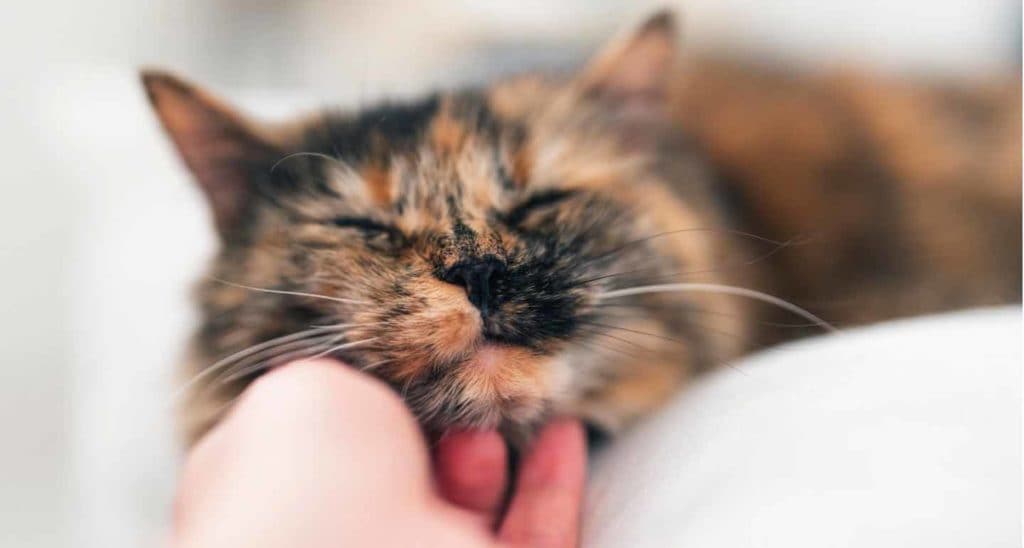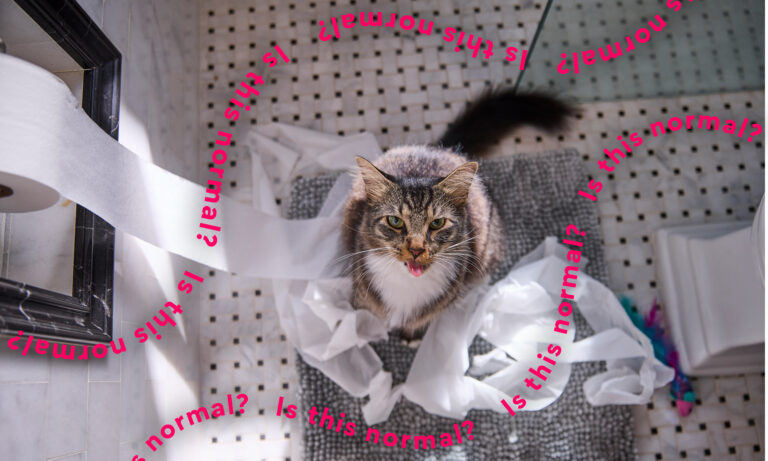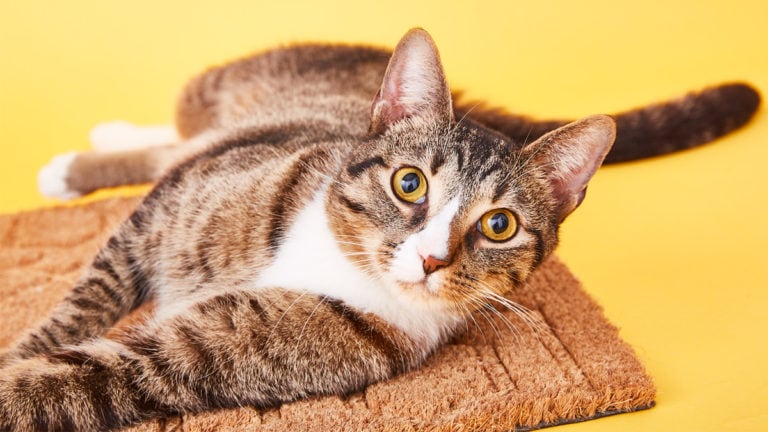Purring is one of the most elusive topics in veterinary medicine. For such a common cat behavior, scientists still aren’t sure of all of the specific mechanisms involved in cat purring, says Dr. Hazel C. Carney, a feline behavior medicine clinician at Westvet Emergency and Specialty Center in Garden City, Idaho.
Here’s what they do know about purring: When cats feel emotion—like pleasure, anxiety or, in kittens, the need to nurse—they flex their diaphragm and voice box muscles to create a purring sound, Carney says.
But the cat purr has more mystery behind it, too. Some scientists believe that cat purrs may have healing powers.
Carney says there’s an old joke in veterinary medicine that if you put two ends of a broken cat bone in the same room, the bone will heal from purring. But is that really true? Here’s what vets believe about cat purrs.
Can Cat Purrs Heal Broken Bones?
Scientists aren’t sure if cat purrs are really healing or not, but the idea exists because vibrations at certain frequencies can stimulate bone healing in both humans and animals and a cat’s purr causes vibrations at the same frequency, Carney says.
Perhaps the most famous paper on the subject was presented by Elizabeth von Muggenthaler at a conference of the Acoustical Society of America. Von Muggenthaler is the president of Fauna Communication Research Institute—a nonprofit dedicated to the study of animal communication.
The paper concludes that cats purr at frequencies between 50 and 150 Hz, the same frequencies needed to speed healing time and boost strength and mobility. This may explain why cat purrs may help heal. Interestingly, it also notes that cat bones take less time to heal than dog bones, and cats don’t suffer from as many bone breaks or injuries as dogs do.
Additional studies have shown that vibrations at the same hertz as a cat purr can help heal broken rabbit bones.
A cat’s purr can also help decrease blood pressure in humans, Carney says. Studies have shown that an anxious person listening to the sound of a cat’s purr may no longer focus on the source of their anxiety and will be soothed by the purring sound, she says.
The Healing Power of the Purr
It’s widely believed that cats purr to heal themselves, and Carney says some cats will purr following an asthma attack (possibly as a way to ease their anxiety caused by the attack). The purring vibrations also may be healing to them.
“Purring is therapeutic for the cats themselves,” says Lee Zasloff, a zoologist who studies the relationships between people and animals. “It’s believed that the purr helps them to retain their muscle tone and bone density.”
She explains that purring is almost like “cat exercise” in that regard. When humans don’t exercise, they lose bone density and muscle tone, but that doesn’t happen in cats, she says, possibly due to purring.
However, Zasloff says, there isn’t a lot of information from the mainstream medical community supporting this fact.
“The jury is still out on the degree to which or whether purring itself does have a healing effect that can be verified with empirical studies,” says Zasloff.
Regardless of scientific proof or not, there is one thing about purring that many cat owners already know to be true: a purring, content cat is a mood booster for people.
“A purring cat sitting in a person’s lap has a stress-reduction effect,” says Zasloff. “Cats are wonderful animals, and the fact that they do purr is something that makes them more wonderful and helps to contribute to our quality of life.”
Teresa K. Traverse is a Phoenix-based writer, editor, traveler and dog mom to Chihuahuas Autumn and Rocket.
Share:









